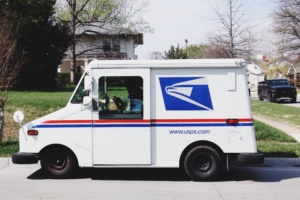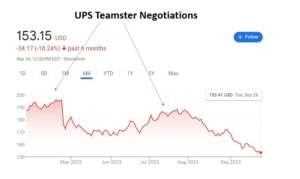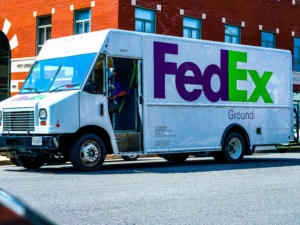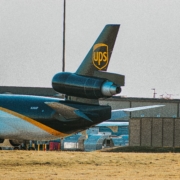Bracing for UPS and FedEX GRIs
Prepare for Impact
First of all, Happy New Year to all of our clients and followers. We wish you all great success and prosperity in 2024!
At this point, the General Rate Increases announced by Parcel Carriers are a distant memory for many. Most shippers, especially retailers, were too busy to think about rates and contracts during the holiday peak season.
But, now that the heavy holiday shipping volumes are behind us, it’s time to gear up for 2024. It’s not likely that you received any relief from the Parcel Carriers on the rate increases that went into effect within the last couple of weeks. So, you might be bracing for the 5.9% General Rate Increases that both UPS and FedEx just implemented. Maybe you have budgeted for this, and feel that your profit margins are safe and protected. Sorry to be the bearer of bad news, but you are probably wrong!
Some shippers might not give this much thought due to them having Rate Caps in place with their carriers. They might be comfortable with the amounts that were budgeted due to the “defined” rate increase that they have in place. Once again, sorry to burst your bubble, but you are also wrong.
We have previously published articles that explain how the impact of General Rate Increases is often higher than percentages announced by carriers, or above Rate Caps that shippers have in place. This is also widely reported and communicated in the consulting community.
It is fairly common knowledge that the driving force behind the disparity in actual vs expected impacts is driven by a shipper’s actual shipment characteristics, along with the impact of Accessorial Rate increases. These items definitely play a major role in inflating a shipper’s costs.
For example, the Residential Surcharge is a very common accessorial charge for shippers. Both FedEx and UPS 2024 increases for these surcharges are above 7.5%! If you check out the lists of 2024 Accessorial Rate increases that we recently published, you will see that just about all of them are above 5.9%. Some are more than 20% higher than 2023! It’s important to note that the announced GRI, and Rate Caps do not apply to accessorials.
Zip-pity Do Dah
Sorry, but the bad news gets worse. If it’s not hard enough to figure out how your Parcel carrier costs will rise given the impact of Accessorial increases, there is another profit margin killer lurking in the background! The carriers have tried to warn you about this potential profit eating monster. But, most shippers didn’t pick up on it.
In the General Rate increase announcements that carriers made this year, they stated that there will be changes related to specific zip codes. The UPS announcement pointed out two potential changes to zip codes.
First, UPS pointed out that there would be changes to zip codes impacted by Area Surcharges (Delivery Area Surcharge (DAS), Extended DAS (EDAS), and Remote Area Surcharge (RAS). Below are details of the changes for 2024.
| Change | # of Zip Codes Impacted | Potential Cost Impact per Pkg. |
| New DAS Zip Codes | 143 | Increase of $3.95 to $7.70 |
| Moved from DAS to EDAS | 108 | Increase of $.95 to $2.00 |
| Moved from EDAS to RAS | 321 | Increase of $6.45 to $9.25 |
| Moved from EDAS to DAS | 465 | Reduction of $.95 to $2.00 |
| Removed from DAS | 155 | Reduction of $3.95 to $7.70 |
It is encouraging to see that some zip codes will actually see a reduction in cost through these changes. There are actually more zip codes experiencing a decrease in cost than those experiencing an increase.
However, it is imperative that shippers determine the net impact of all of these changes. Obviously, there is a much larger increase in cost per package for packages that move into the Remote Area Surcharge (RAS) category, compared to the reduction in cost for packages that moved from EDAS to DAS. There is only one way to determine the true impact of these changes, and we will get to that later.
The second impact to zip codes that occurred with the UPS 2024 rate change is a bit less obvious to shippers. However, it could be even more impactful. UPS had announced that “The list of ZIP Codes aligned to certain zones will change.” We have seen this type of announcement in the past. But, we were unable to identify any noticeable changes. But this year that has changed.
ICC Logistics has been monitoring the changes to zones since this announcement was made back in December. We recently completed a high level analysis that compared Zones for specific Zip Code origins for 2024 vs 2023. We determined that zones actually decreased for some origins, and increased for others. Below is a table that demonstrates some of our findings.
| Origin City/ State | Origination Zip | Total # of zone changes | # of changes to a higher zone |
| Mahwah, NJ | 074 | 0 | 0 |
| Hicksville, NY | 118 | 1 | 0 |
| Orlando, FL | 327 | 25 | 10 |
| Plainfield, IN | 460 | 52 | 38 |
| Dallas, TX | 750 | 62 | 36 |
| Phoenix, AZ | 850 | 35 | 22 |
| Goodyear, AZ | 853 | 23 | 18 |
| Total Changes | 198 | 124 |
As you can see, our study suggested that there were more zip codes that experienced an increase in Zone compared to a decrease. It also suggested that there were some origins that had no change at all.
So, what are the implications of this? First, although the actual percentage of zip codes that were impacted were low, the increase in cost associated with zone increases could be substantial. The table below is based on UPS 2024 Published rates, and helps to demonstrate that an increase in Zone could have a big impact on cost per package.
| Weight | Zone 3 vs 2 | Zone 4 vs 3 | Zone 5 vs 4 | Zone 6 vs 5 | Zone 7 vs 6 | Zone 8 vs 7 |
| 1 Lbs. | 3.93% | 9.26% | 4.53% | 2.36% | 2.08% | 0.83% |
| 5 | 11.07% | 9.89% | 8.55% | 4.03% | 5.43% | 7.01% |
| 10 | 7.42% | 9.64% | 9.92% | 3.46% | 11.18% | 11.56% |
| 15 | 7.10% | 5.22% | 12.76% | 15.32% | 20.40% | 10.72% |
| 20 | 12.51% | 2.14% | 23.01% | 16.46% | 21.66% | 12.14% |
| 25 | 16.81% | 6.87% | 19.68% | 22.94% | 20.61% | 14.08% |
| 30 | 18.63% | 9.76% | 19.80% | 24.82% | 16.19% | 17.78% |
| 35 | 23.03% | 11.82% | 18.43% | 24.23% | 18.18% | 17.66% |
Also, we must point out that the increases portrayed here are on top of the 5.9% GRI that UPS had announced for 2024. So year over year impacts are greater than portrayed above. Once again, there is really only one way to determine the true impact of these changes, and as promised above, we will get to that later.
However, we feel that the biggest thing to consider here is the very fact that these zonal changes have been made. As we stated earlier, to our knowledge these types of changes have not been made by carriers for quite some time now. If they have been made, it has not been very apparent to anyone in the shipping world.
The concern here is that carriers could take advantage of this somewhat sneaky way to increase their profits (at the expense of shipper’s profit margins). Carriers may argue that they did not only increase zones on some zip codes. They will be sure to point out that they lowered zones in some cases as well!
But at the end of the day, all that they have stated is that “The list of ZIP Codes aligned to certain zones will change.” There has been no guidance regarding the impact to shippers. We are fairly certain that if these changes would result in overall lower costs to shippers, carriers would be anxious to point this out publicly.
What Now?
So by now you are most likely thinking “What should I do about this?”, or “How will these changes impact my company?”. Well as promised we will tell you how to get answers to these questions. The answer is simple. Be sure to reach out to ICC Logistics ASAP. Our unmatched analytical abilities, along with our proprietary database and processes will help you to determine the true impact of these changes. Even better, we will help you determine the best way to mitigate these unplanned/ unexpected profit damaging cost increases!














